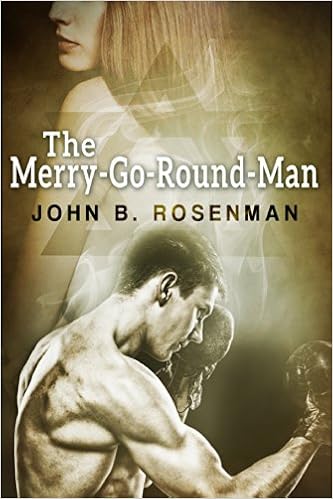Greetings, commie!
A few months ago I posted an interview with John Rosenman, known for his sci-fi and fantasy novels. Today I am posting a review of his nostalgic novel The Merry-Go-Round Man.
Synopsis:
Do you believe you can shape your future, determine your destiny? One
spring day in 1954, three sixth grade boys make a bet: the one who can
climb first to the top of a small green merry-go-round outside their
school will be “Champ for life!” For the rest of his days he’ll be “on
Easy Street!” So they engage in a “mad scramble . . . clambering over
each other with murderous intent,” and eventually one of them reaches
the summit and stands triumphant, lording it over the others. He is the
merry-go-round man.
The Merry-Go-Round Man is a novel about three boys growing up in the
so-called innocent days of the Eisenhower fifties. It’s about rites of
passage, loss of innocence, sexual initiation, racism, and much more .
Of the three boys, Johnny Roth is central. He possesses two
transcendent gifts which are only beginning to emerge as the novel
begins. One of them is the ability to box or fight, something he deeply
fears. The other ability is artistic and mystical. He is a natural
expressionistic painter of vast potential. Unfortunately, Johnny’s
father, an Orthodox Jew, hates both of these pursuits, and his
opposition tears Johnny apart.
Of the two other boys, Lee Esner grows up to be a gifted football
player with what looks like a lucrative pro career ahead of him. He
also has a flair for attracting beautiful girls. Is he the
merry-go-round man? The third boy, Jimmy Wiggins, is black and from the
ghetto. Attending an elite white school with Johnny and Lee, his naive
love for a pretty white girl is destroyed by her cruel racism. Another
rite of passage. Symbols such as a burning Buddhist monk make us ask
whether anyone is really The Merry-Go-Man in life.
My thoughts:
A merry-go-round is perceived as a symbol of innocence, of cloudless childhood, but in John Rosenman's novel The Merry-Go-Round Man,
opening in 1950s Ohio, it becomes a symbol of competition, temptation
and hidden menace. In 1950's America was on the cusp of two major
movements: the civil rights movement and the sexual revolution. The
three main characters - Jimmy, Johnny and Lee - all from different
social circles, are products of their era. They are no strangers to the
prejudices and misconceptions. They share enough universal boyish
interests to stay friends, yet they had already had enough brushes with
the outside world to start building invisible fortifications around
themselves. I noticed that many reviewers pointed out Johnny as the most
interesting character in the book, but I was particularly moved by the
delicate and complicated plight of Jimmy, a black boy whose mother goes
out of her way to send him to a white school. She wants to see her son
succeed in the mainstream society, against all odds, but that does not
prevent her from referring to him as "little nigger". I think it would
be hypocritical of us to pretend that we are a "color-blind" society. We
are not. And we certainly were not in 1950s. African American children
who are hurled into a predominantly white environment, often find
themselves ostracized by both sides. Even at the age of 12, Jimmy
Wiggins already realizes his precarious social status. Same is true for
Johnny, who is still being referred to as "kike". Now that's a word you
don't hear much on the streets these days, but it doesn't mean that the
sentiment of anti-semitism does not exist.
The author does a
marvelous job of defying cliches, redefining the symbols, using them in
new creative ways, and highlighting the difference between innocence and
ignorance. These two concepts are often used interchangeably. Despite
the seemingly idyllic setting, The Merry-Go-Round Man is not a typical piece of nostalgic Americana. It's like a chocolate candy in a pastel wrapper with a bitter center.

No comments:
Post a Comment